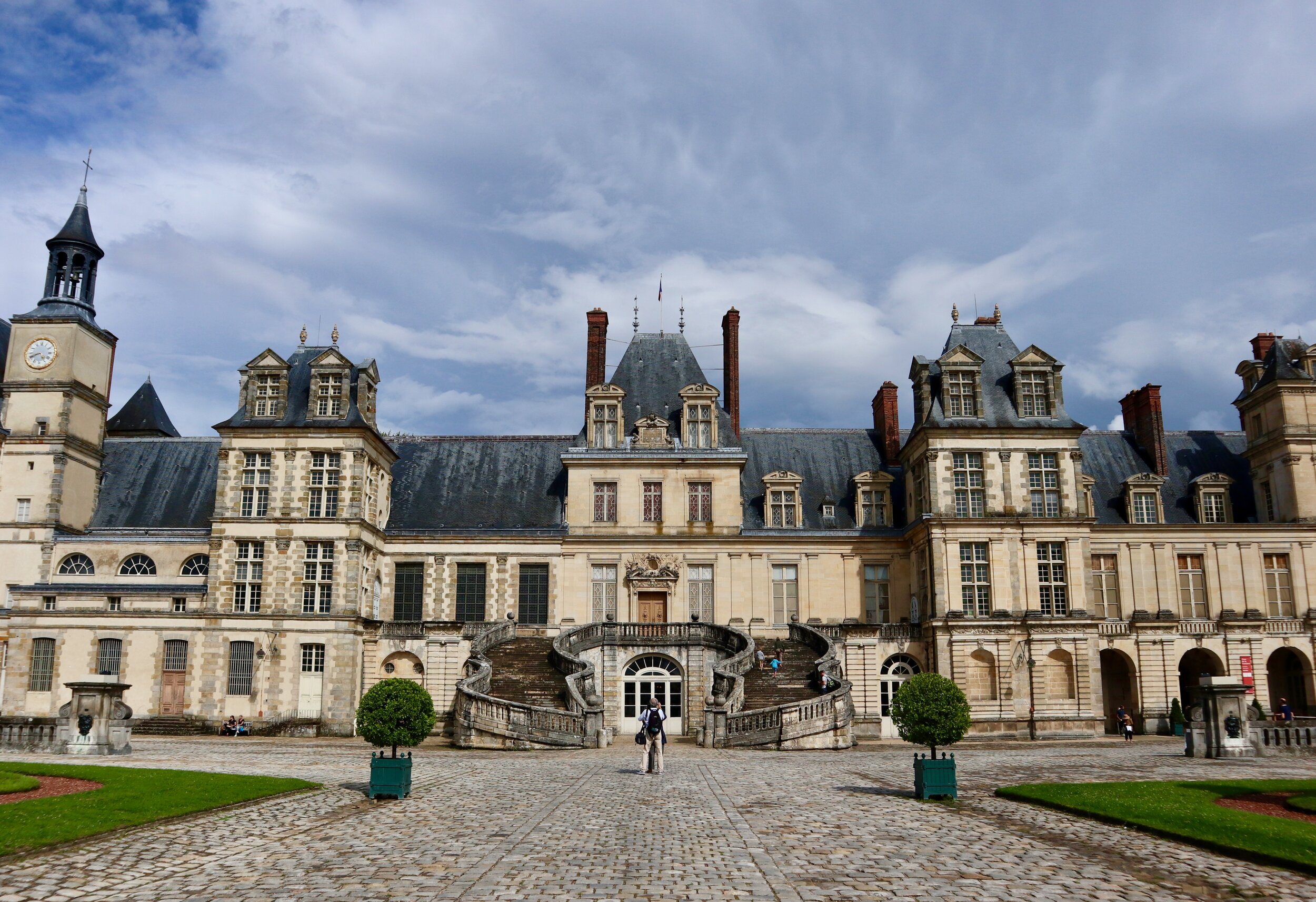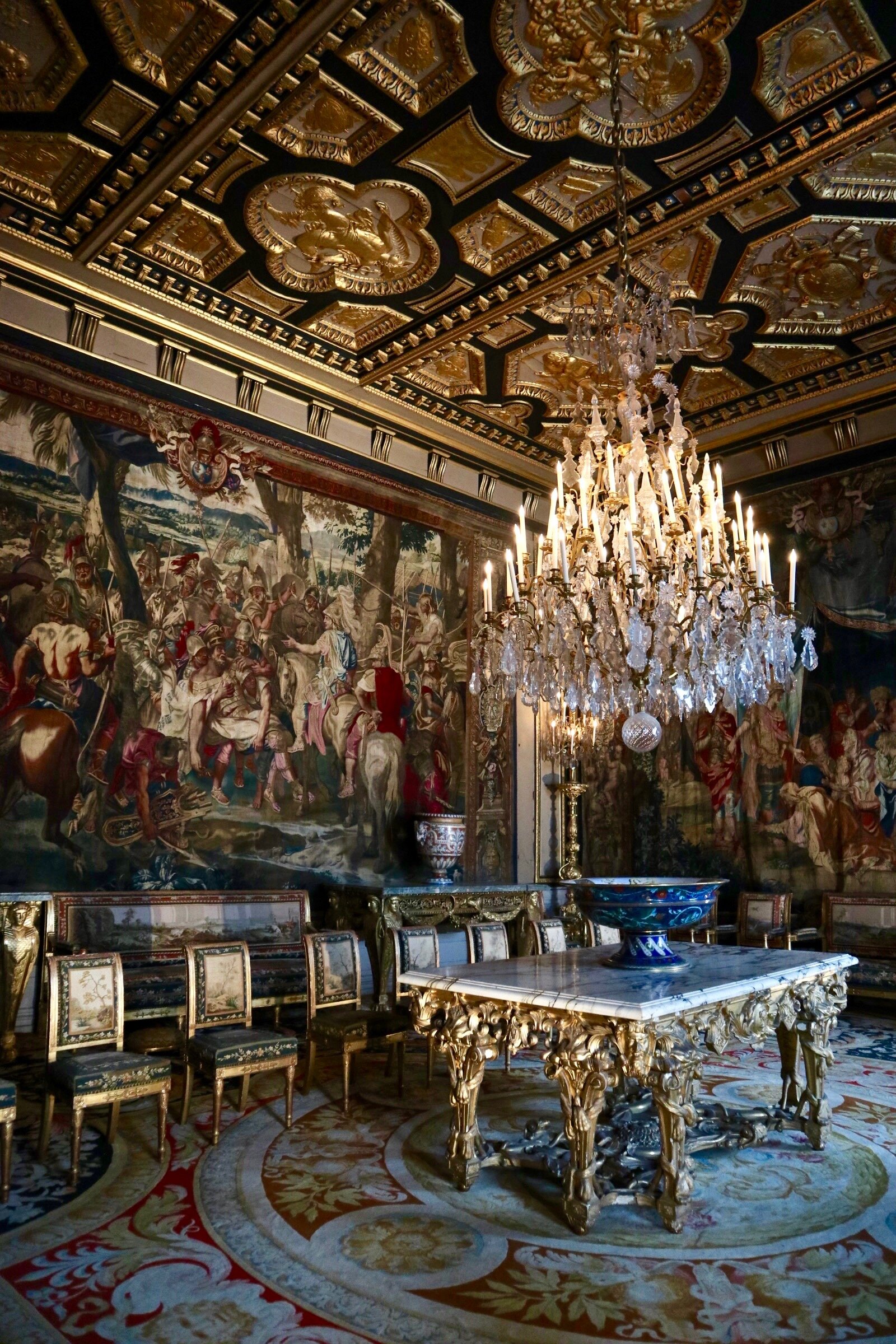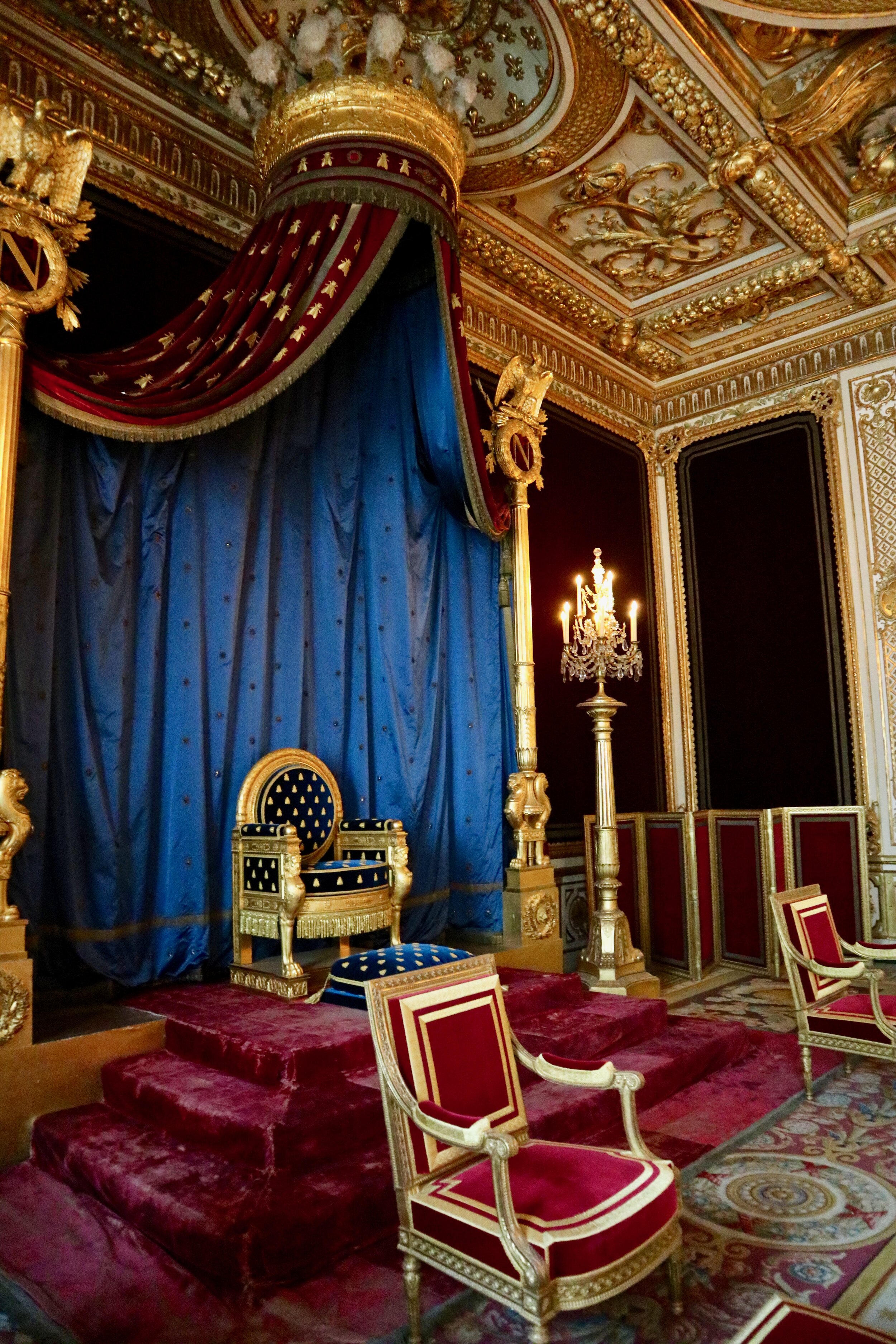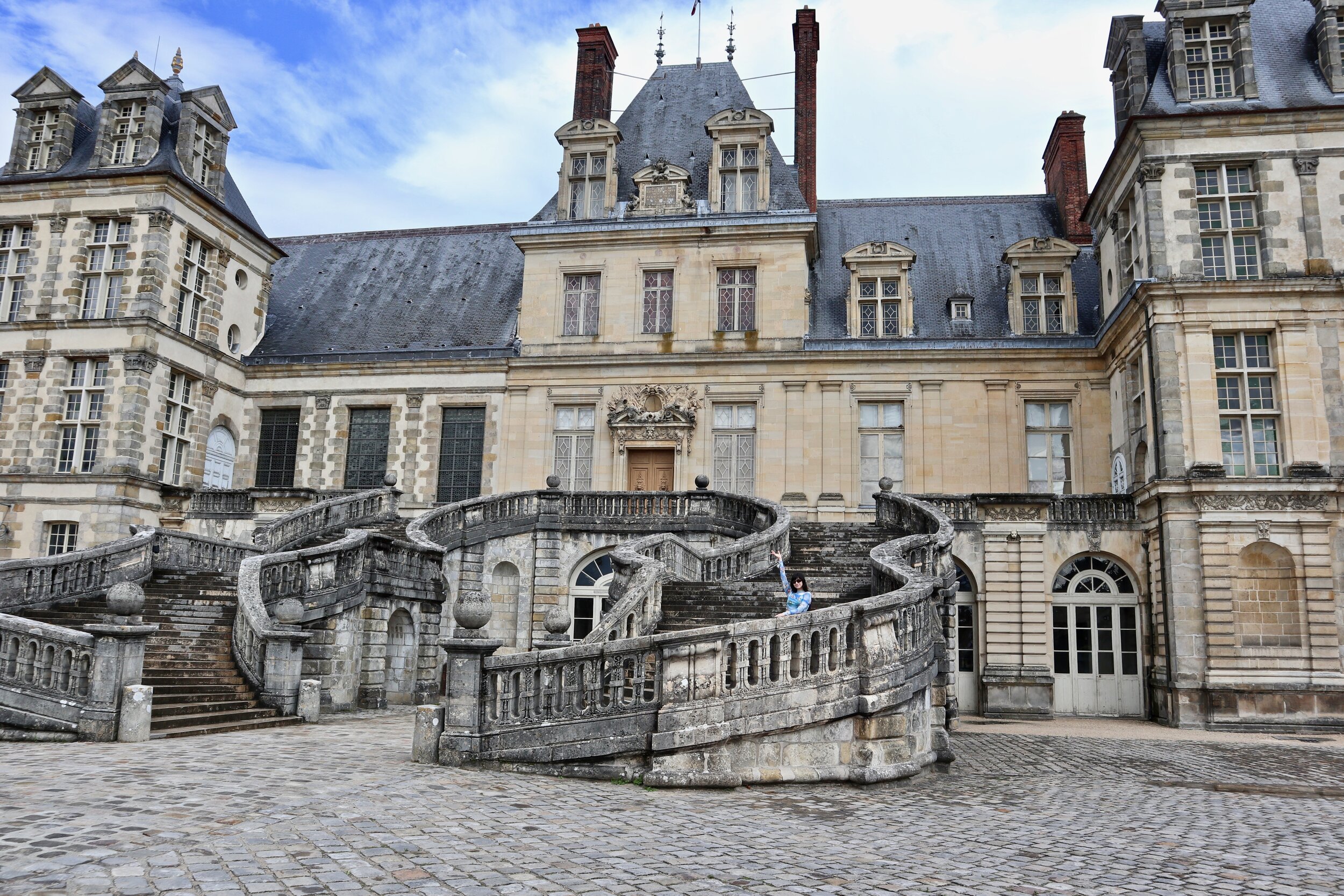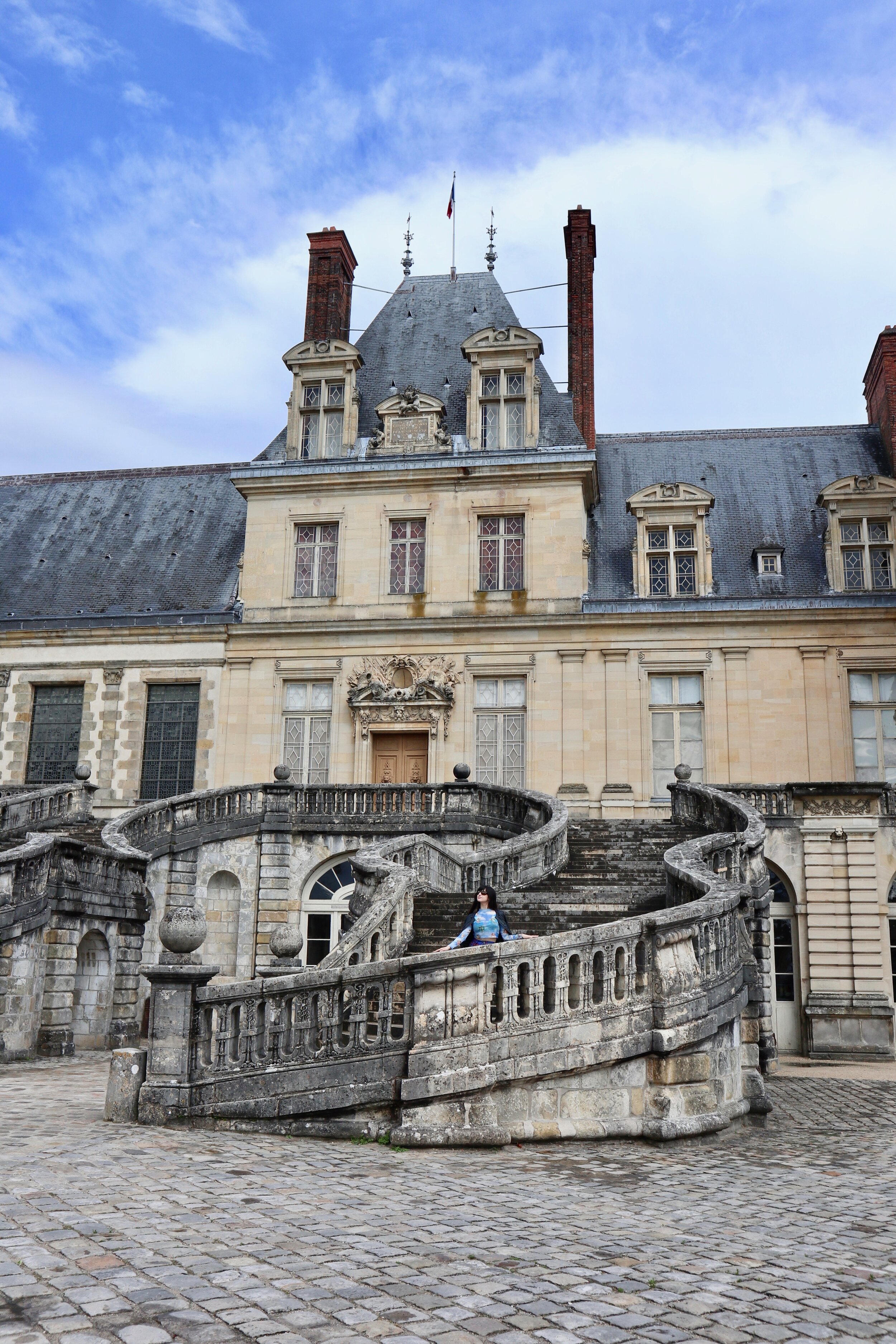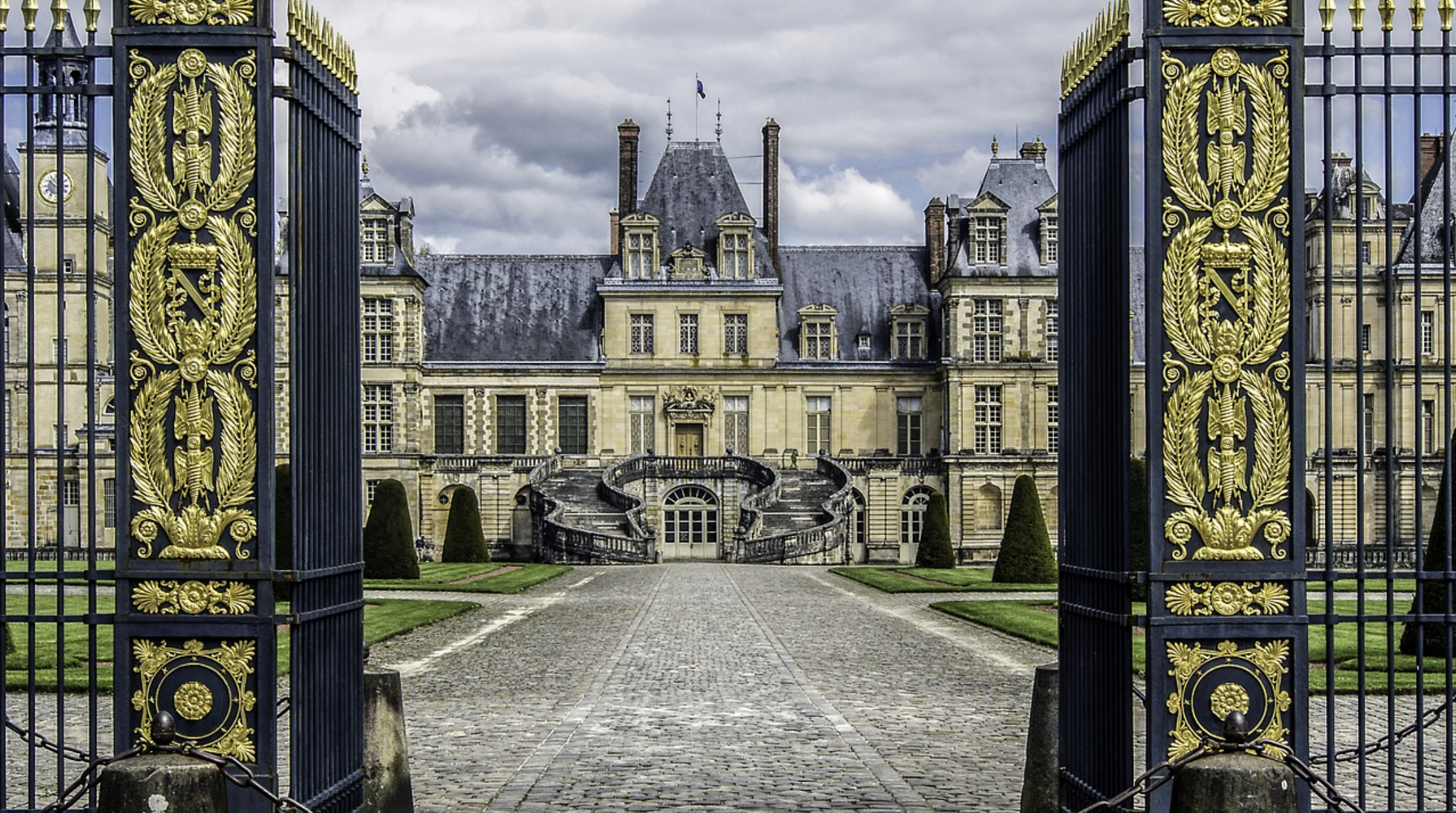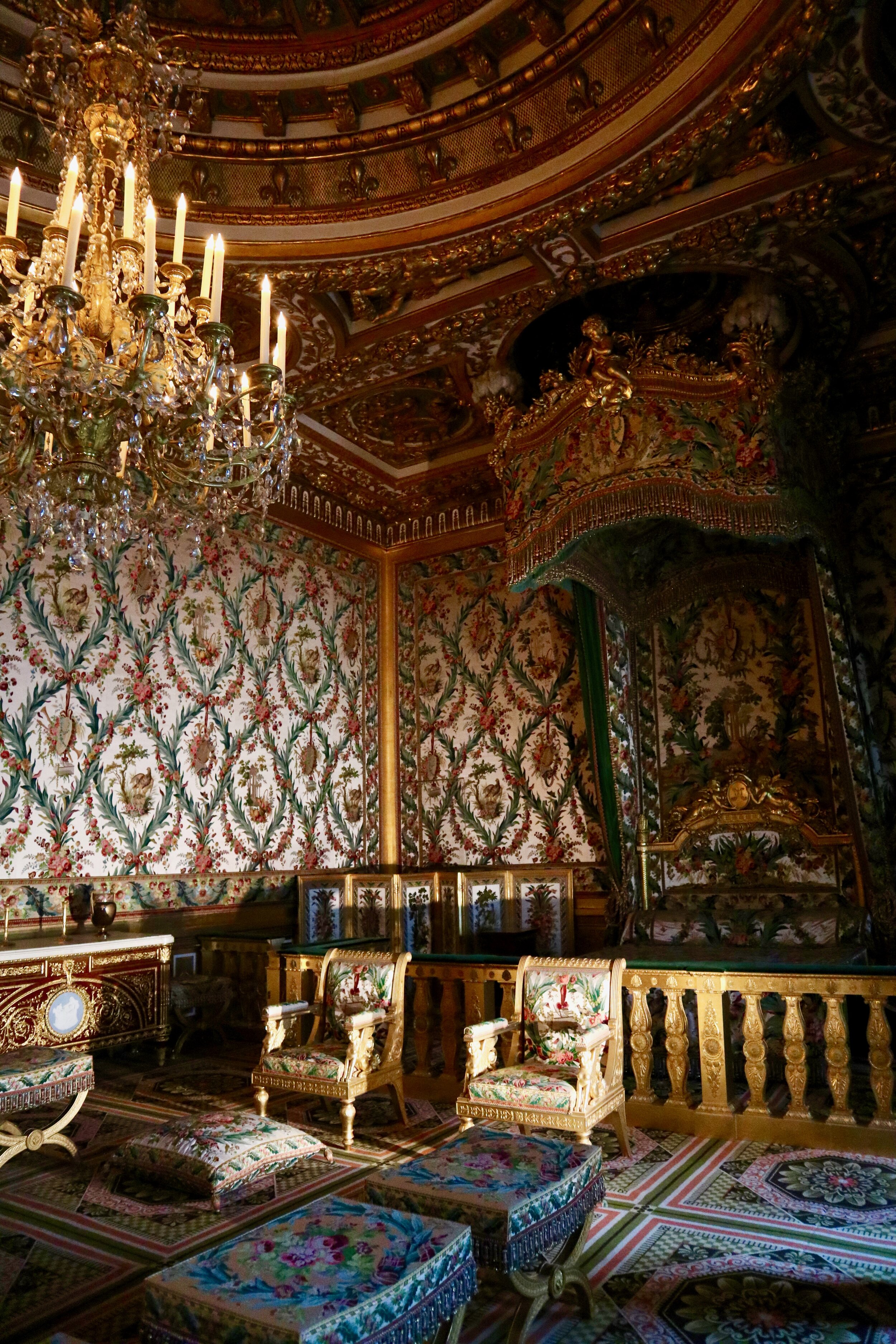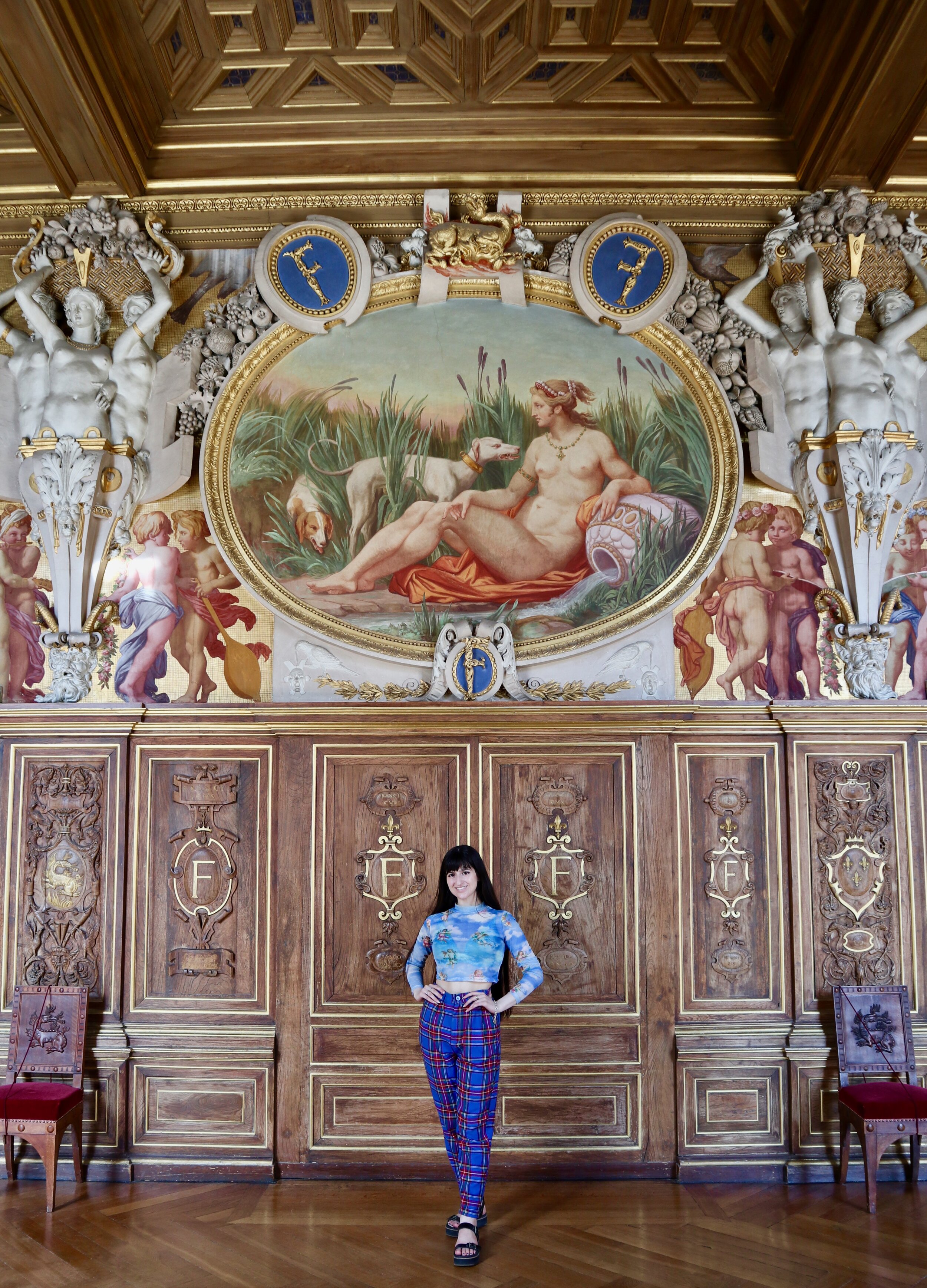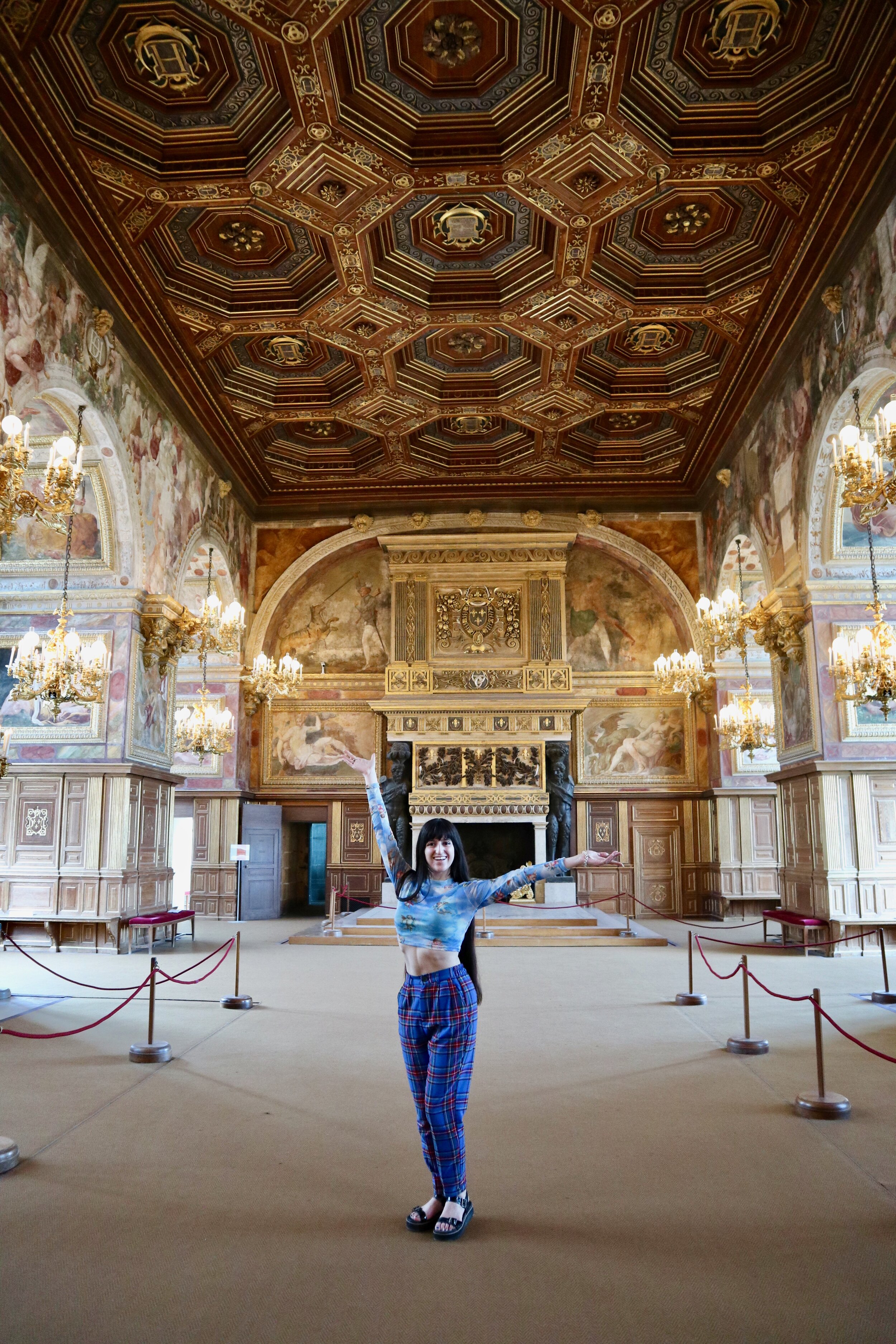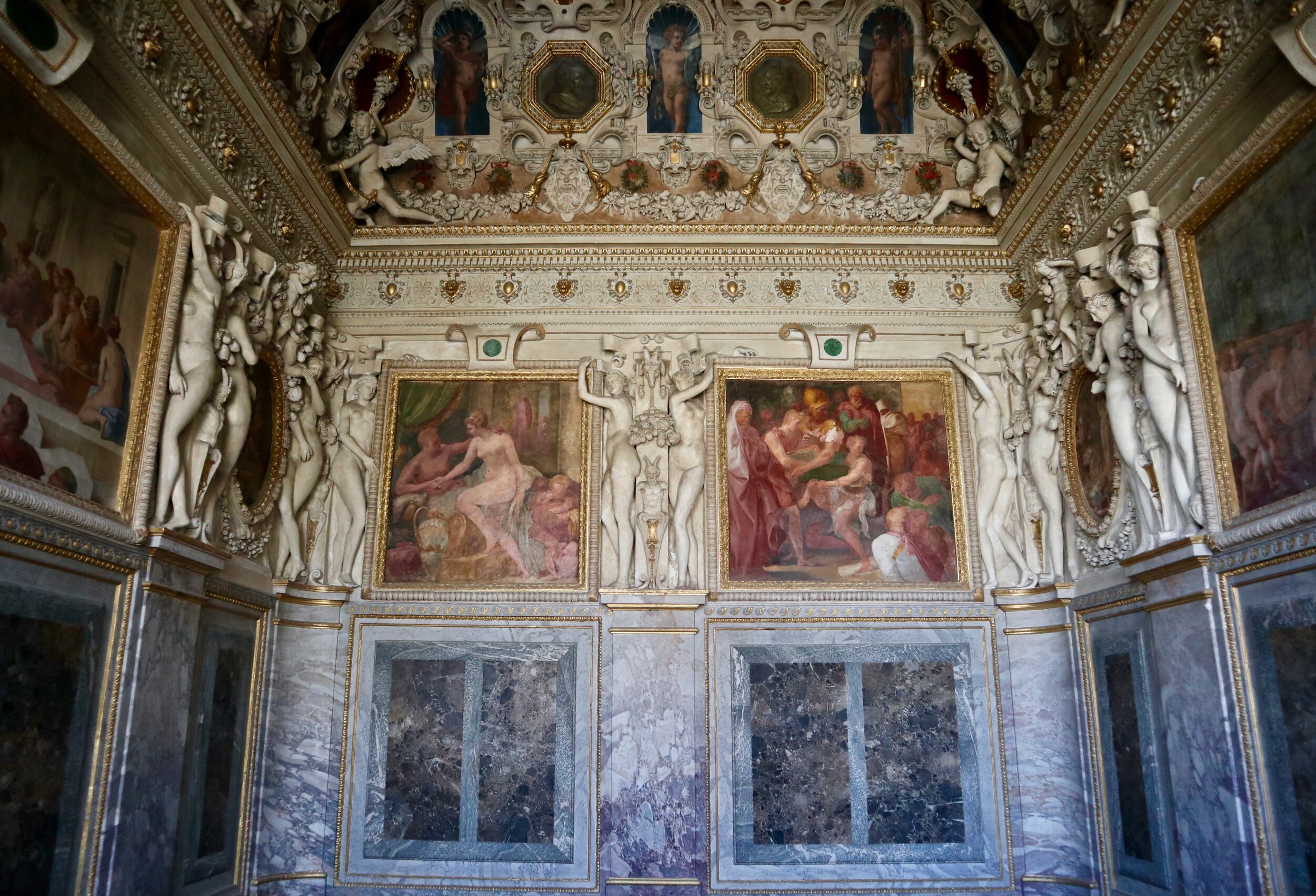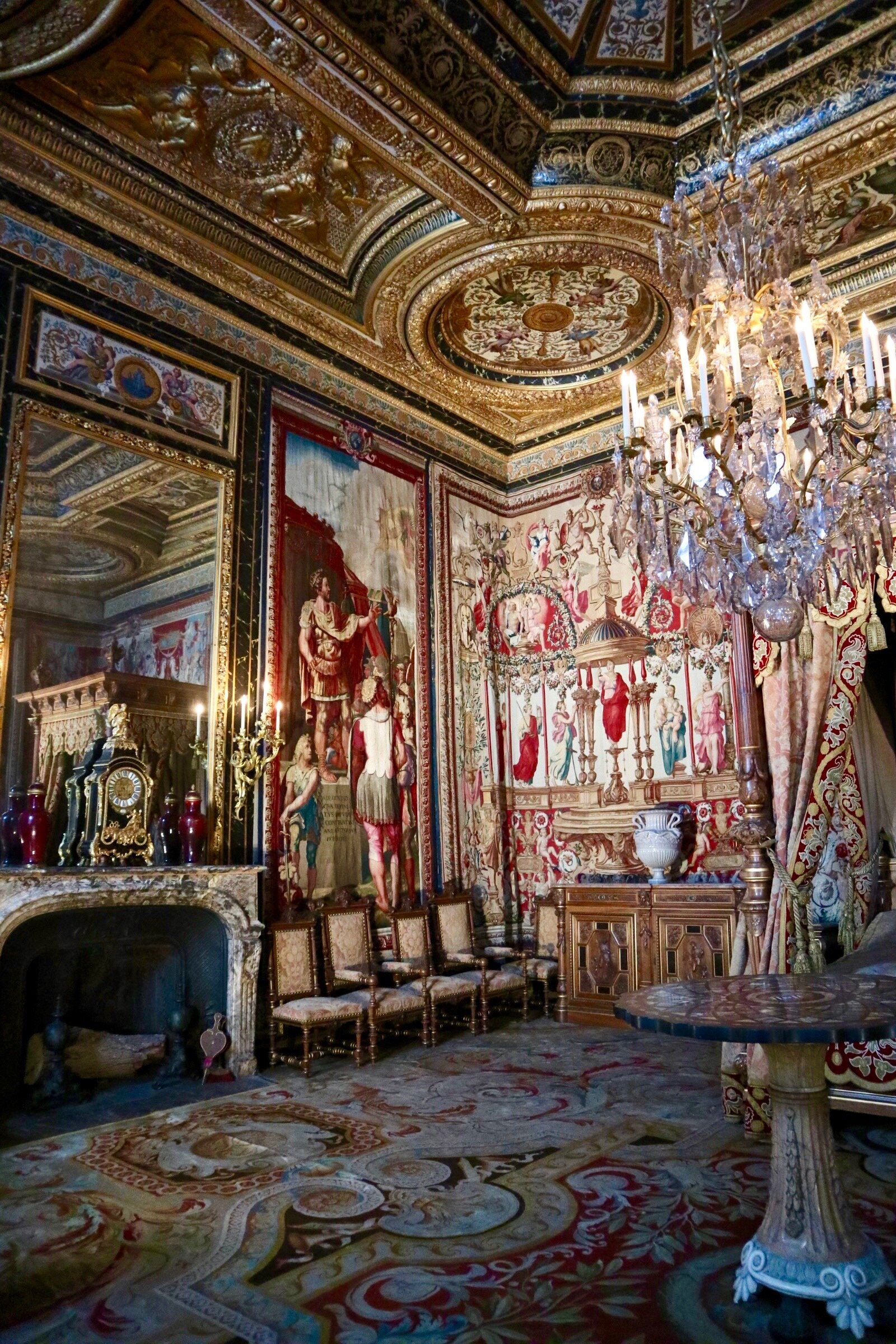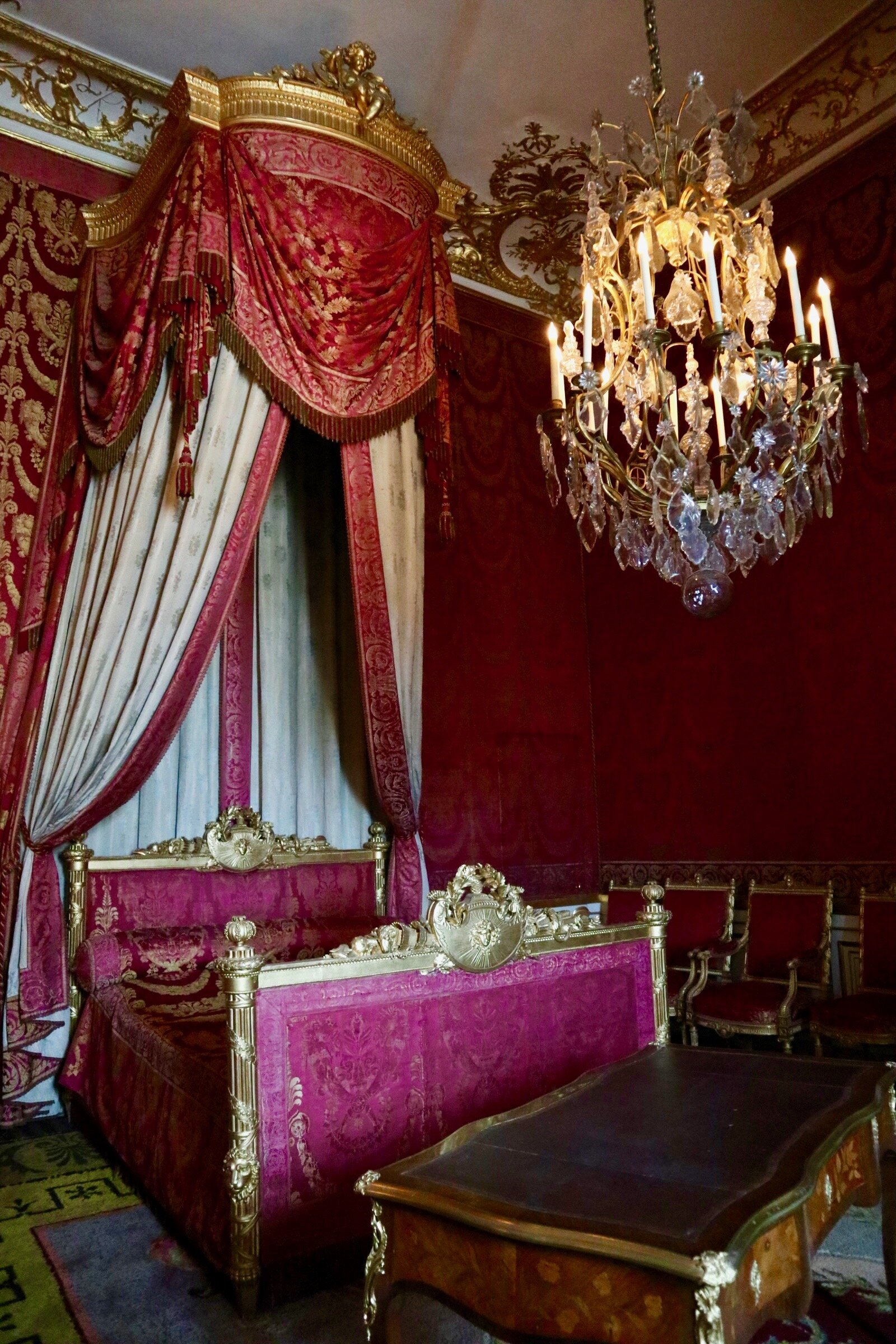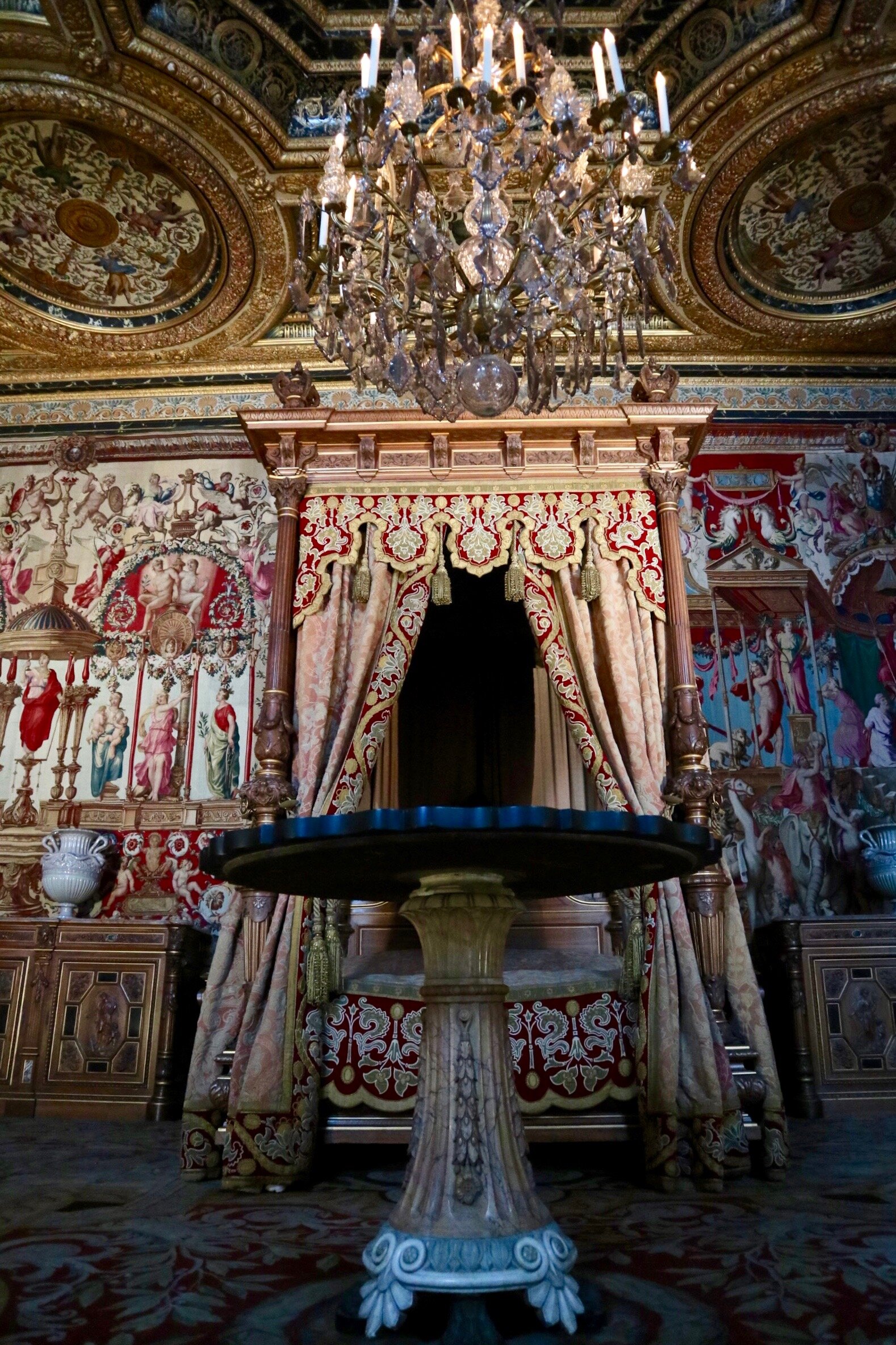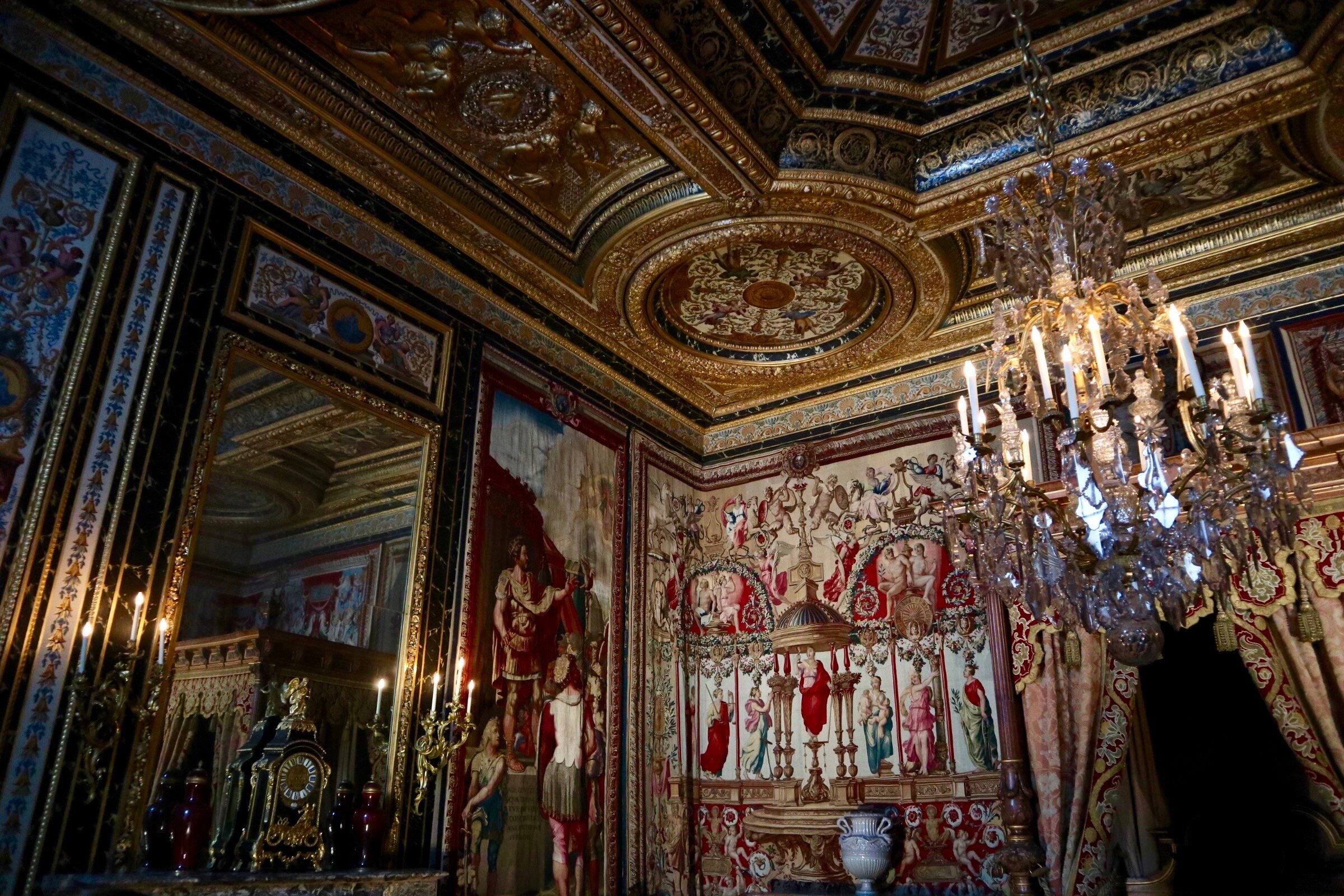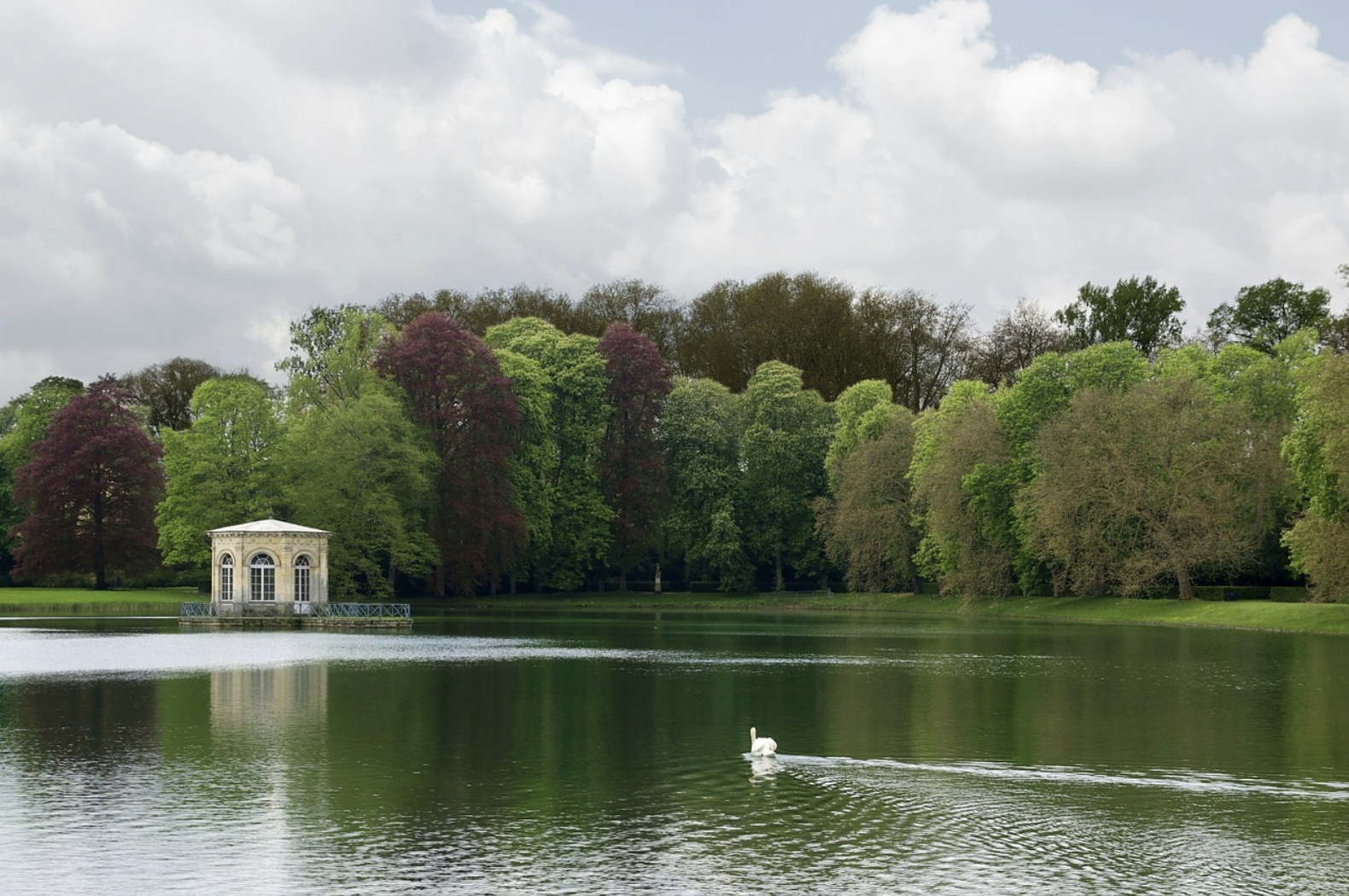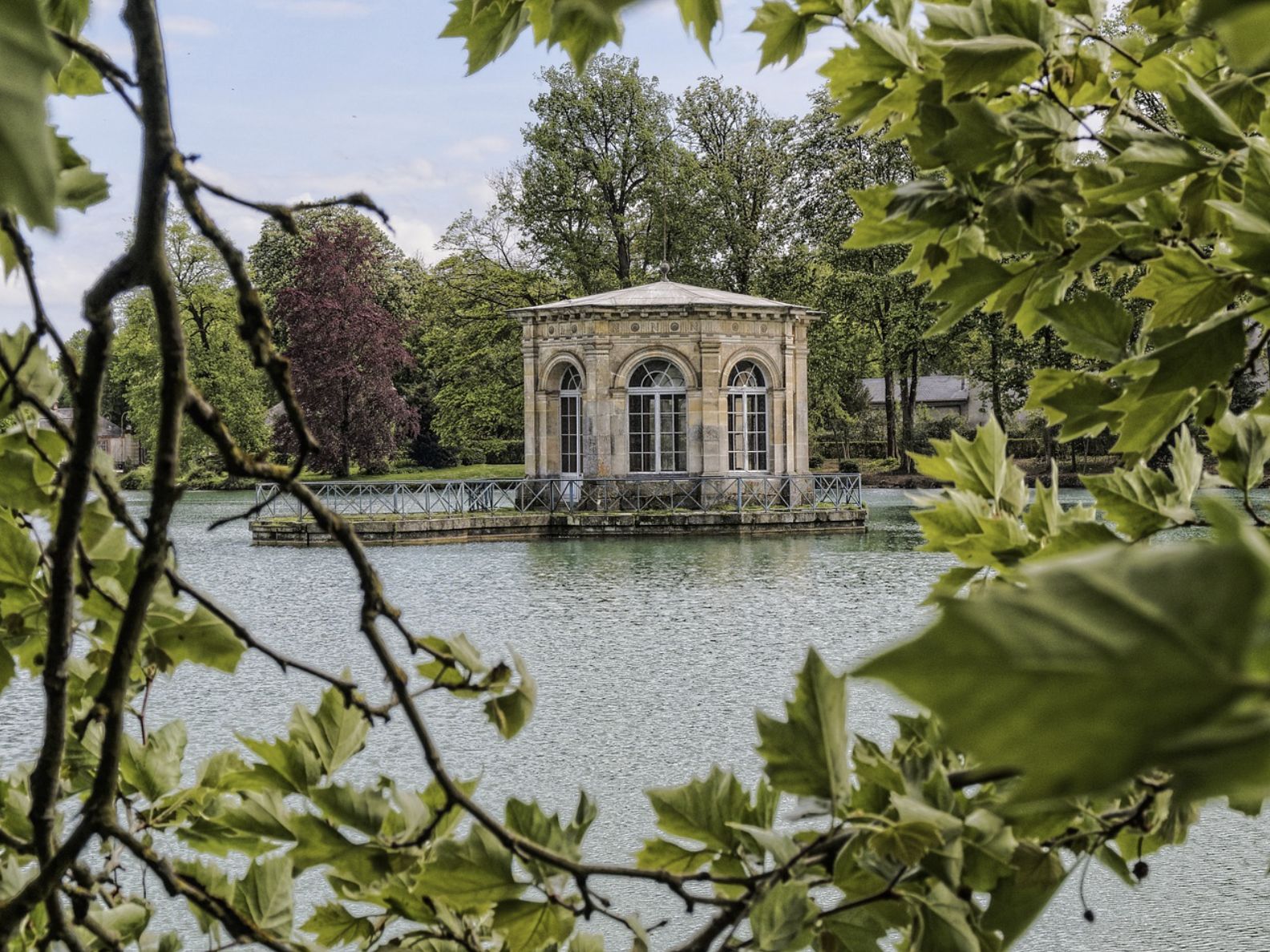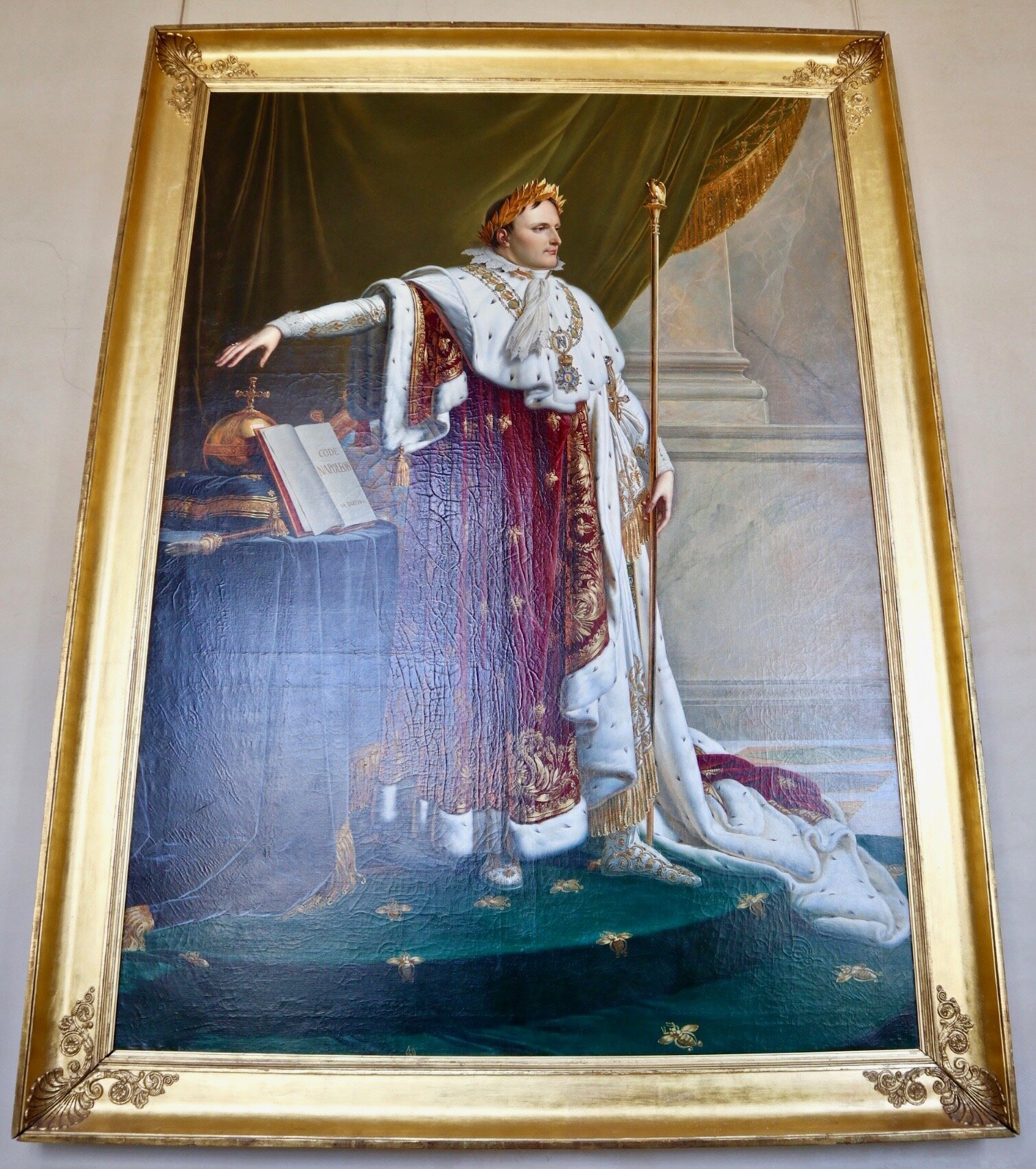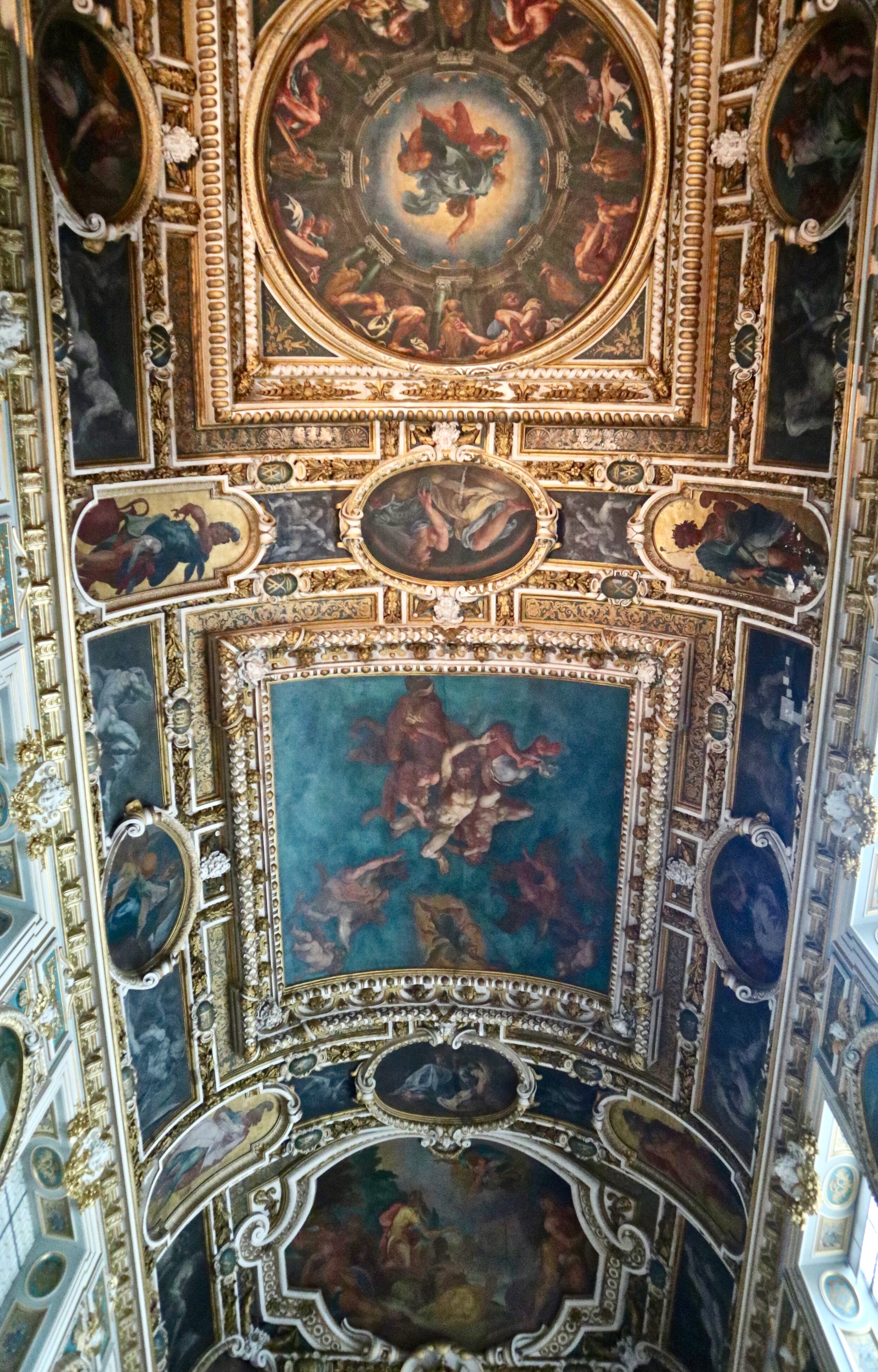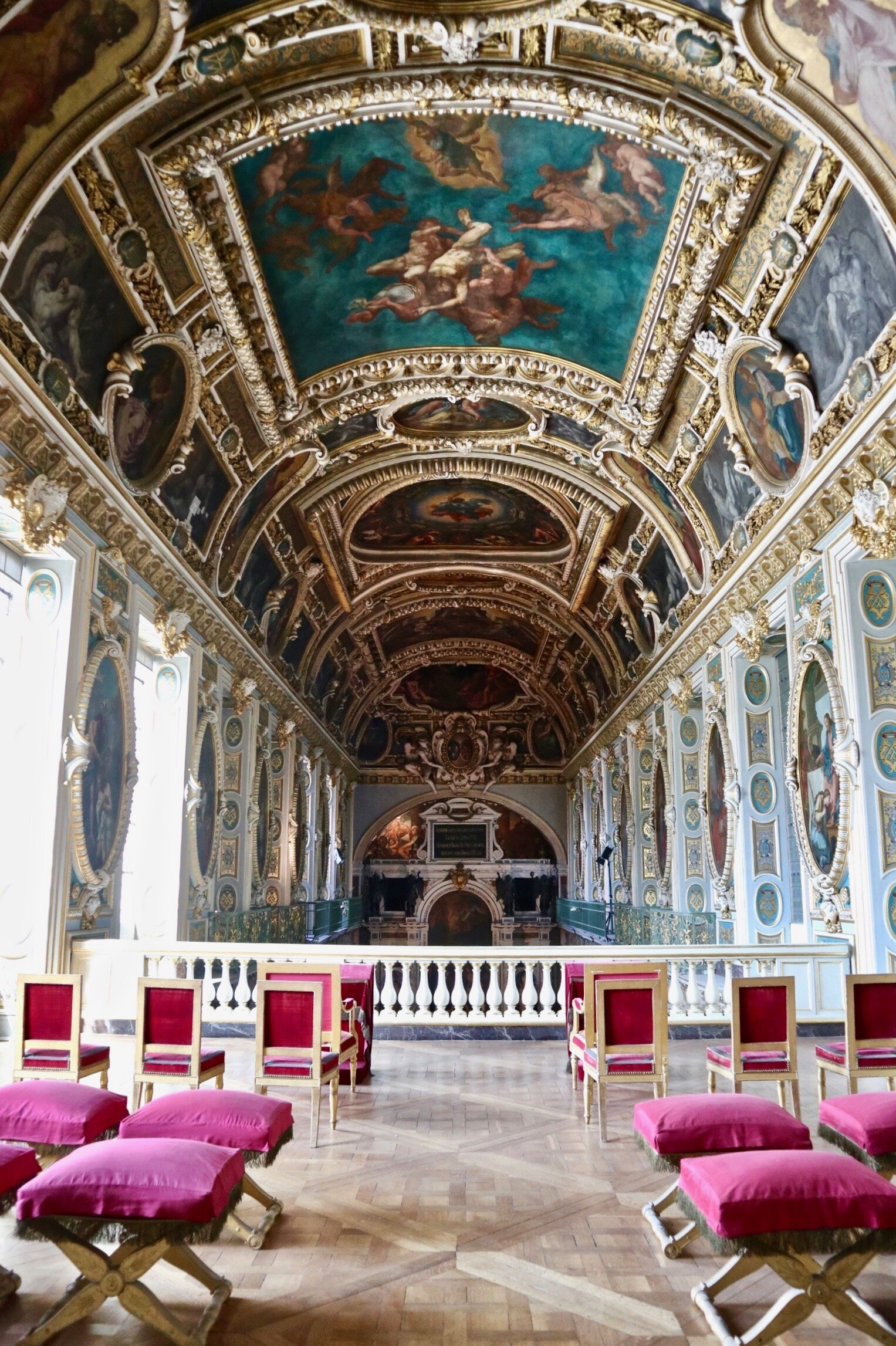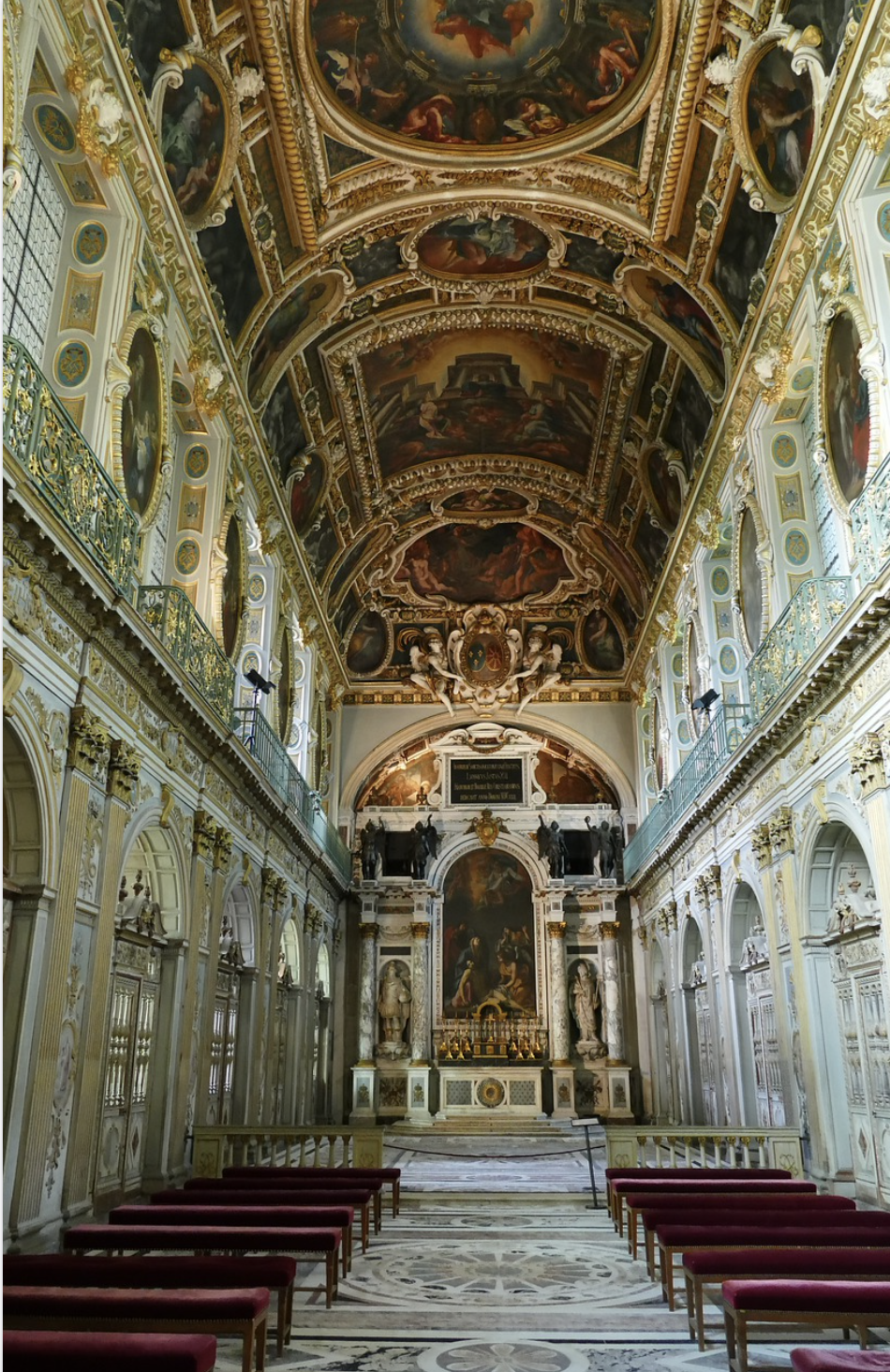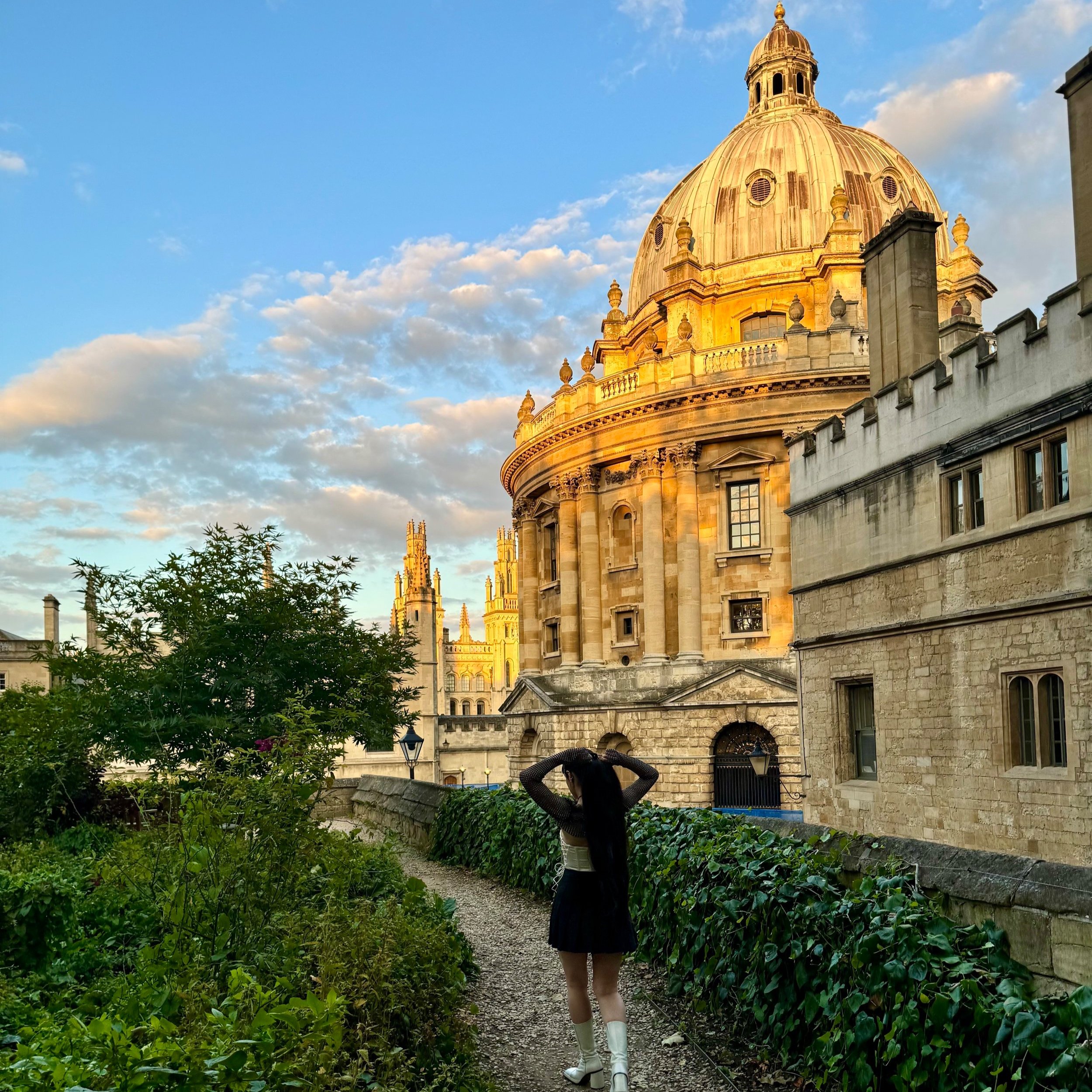CHÂTEAU DE FONTAINEBLEAU - French Castle Inhabited by French Monarchy and Napoleon Bonaparte, That Inspired Marie Antoinette's Château de Versailles (Day Trip from Paris)
When people think ‘France’ and ‘Castles’ often Versailles is the first conjured image in one’s mind. However, while the famous (or infamous, depending on who you ask) Palais de Versailles (or Château de Versailles) is undoubtedly a magnificent architectural treat, there are other opulent castles on the outskirts of Paris that are well worth a visit.
One such palace is Château / Palais de Fontainebleau (pronounced fawn-ten-blow, not fawn-ten-blue). What began as a humble medieval castle is now a lavish palace, that has served as a residence for some historical figures known for their extravagant tastes - namely, the French monarchy, and Napoleon (yes, that Napoleon, and his family).
While Versailles is gorgeous, it’s always flooded with tourists. It’s difficult to appreciate the beauty of the building when you’re sardined between six tour groups, and are smelling sweat, or the debris from renovations, everywhere you go.
If you want to visit a tourist-free French castle easily accessible from Paris, whose interior is as luxurious as Versailles (after all, it is the inspiration!), then you must look no further than Palais de Fontainebleau. This castle gives you all the luxe and glamour, without any of the crowds. You can actually have a decent photo-op, and you can actually take in the lavish decorations in peace. I cannot recommend visiting this castle enough - I far prefer it to Versailles!
Located within Île-de-France at 55 km southeast of central Paris, this historic structure has been around since 1137. It is a certified UNESCO World Heritage Site, and is one of the largest French royal castles. It has undergone many decorative and political changes throughout the centuries, and the resulting castle is rich in both design and history.
I have included a plethora of my own photos from when I visited Palais de Fontainebleau. If somehow my words can’t convince you to visit, then the photos of this spectacular monument (which housed everyone from Louis VII to Napoleon III) surely will!
Note: All of the photos taken are my own, taken on a (now defunct) iPhone 8 Plus.
The exterior of Palais de Fontainebleau. Grandiose AF.
Exterior
Château de Fontainebleau is an impressive structure, that is as large as it is decadent. The size makes a lot of sense, given that the castle can be found within the sprawling 130 hectare estate grounds of the forest of Fontainebleau.
The lush woodland, punctured by the imperial castle in the distance, makes for a rather picturesque journey.
The exterior facade, fashioned in the Renaissance-Baroque style, is made from plastered rubble with brick dressings. These buildings materials give the castle the telltale ‘beige’ colour often found in French architecture.
The steps make for a fantastic photo-op, especially when the sun peaks out! I recommend burgeoning photographers to bring along a proper camera to truly capture the scale of the palace.
Interior
I am about to lambast you with an extensive array of photos of the interior of Fontainebleau. Prepare to be bombarded with gold detailing, intricate tapestries, crystal chandeliers, velvet-upon-velvet, marble, and a load of other things that will make you rethink that decision to not invest your life savings in Bitcoin*.
Something important to keep in mind is that Marie Antoinette - the woman who invented being extra AF herself - was directly inspired by the look of Fontainebleau to create the Château de Versailles. It’s really not difficult to understand the inspiration when viewing the photos. It’s a highly effusive castle, and its choice as the primary residence for the majority of French Kings (and Emperor) decided is rather evident.
The palace, as it was expanded over the centuries, has architectural features from both the Renaissance and Medieval period. The extensive details and decorations are from the former, and the towers and curtain wall are from the latter.
*This is obviously in jest.
The photo below depicts Napoleon’s Throne Room.
Rather audaciously, Napoleon (yes, the first and original Bonaparte) switched up the location of his throne room, to reside where the royal bed of the former Kings of France (Louis XVI, Henry IV, Louis III, etc.) had been. Why? Because he could. I’d like to see you try and disagree with one of France’s most prolific generals a̶n̶d̶ ̶d̶u̶d̶e̶ ̶w̶h̶o̶ ̶s̶a̶i̶d̶ ̶h̶e̶ ̶w̶a̶s̶ ̶e̶n̶d̶i̶n̶g̶ ̶t̶h̶e̶ ̶m̶o̶n̶a̶r̶c̶h̶y̶ ̶o̶n̶l̶y̶ ̶t̶o̶ ̶i̶n̶s̶t̶a̶l̶l̶ ̶h̶i̶m̶s̶e̶l̶f̶ ̶a̶s̶ ̶a̶ ̶l̶i̶t̶e̶r̶a̶l̶ ̶e̶m̶p̶e̶r̶o̶r̶ ̶l̶i̶k̶e̶ ̶t̶a̶l̶k̶ ̶a̶b̶o̶u̶t̶ ̶a̶ ̶b̶i̶g̶ ̶e̶g̶o̶ ̶o̶n̶ ̶a̶ ̶l̶i̶t̶t̶l̶e̶ ̶m̶a̶n̶ ̶l̶i̶k̶e̶ ̶w̶h̶a̶a̶a̶t̶.̶
You barely know where to look… it’s that luxurious.
Gold… gold everywhere.
The following images depict the Gallery of Francis I, which, after its finalization in 1539, connected the King's apartments with the chapel.
This Gallery has a historical importance in regards to decor, as it helped introduce the Italian Renaissance style to the French.
Photos of me, for scale.
I’m sorry, I’ve got even more photos. Can you believe I edited these down…?
The tapestries used throughout were more than mere decoration; they helped insulate the rooms!
The gardens and the park
No good French castle is complete without an elaborate garden.
Besides the surrounding woodlands, there are a number of stylized gardens within the castle grounds. The English Garden and the Garden of Diana - with a statue of the huntress herself! - are the most well-known. My favourite area of the garden, however, is the gazebo (Pavillon de l'Ètang) that can be found floating within the carp pond.
Below is a photo of the Pavillon de l'Ètang. It’s a rather romantic structure, which was conceived during the reign of Louis XIV. Napoleon, of course, felt it was necessary to add his own touch, and ensured that his initials were engraved onto the structure.
While the beauty of Fontainebleau’s garden is incontestable, it is not as elaborate or ornate as the one at Château Vaux-le-Vicomte (the castle grounds that were a direct inspiration to the ones at Château de Versailles).
Napoleon Bonaparte (And french monarchs)
Many people enjoy that the Castle of Versailles, which was connected to the controversial Louis XVI and Marie Antoinette, has such a rich history. However, the history and guests at the Castle of Fontainebleau is just as intriguing!
The first famous face that resided in Fontainebleau was Napoleon. Inside the Palace is a museum dedicated to his life, family, and history.
If you’re a French monarchy buff, you’ll be pleased to know that the majority of high-profile French monarchs lived in this castle. If you visit, you will literally be standing in the same places as the rulers of one of Europe’s most affluent countries!
I always enjoy the feeling that I’m walking through groundbreaking history whenever I visit monuments that have stood the test of time. Fontainebleau absolutely captures this feeling, and it’s a real pleasure to visit.
Essentially, the palace itself is food for the eyes, and this extra museum is food for thought.
The Chapel of the trinity
The French Monarchy and the Church were innately tied for many, many years (I promise I won’t go into an essay on the Divine Rights of Kings). As such, a grand chapel was a must in any decent French palace.
The Chapel of the Trinity is certainly a leader in the ‘majestic religious ornamentation’ category. Throughout the reigns of different kings, changes were made. The resulting chapel has been restored, and receives regular maintenance to ensure its impact.
In order to (sadly) perpetuate classicism, the chapel had an upper and lower section. You can probably guess where the King and the royal family sat, as opposed to the rest of the Court (hint: The King liked to be above the people). This seating arrangement was quite common in chapels built in similar time periods. Another notable example is Sainte-Chapelle in Paris.
What I strongly encourage when visiting the chapel is “look up”. The ceiling fresco, depicting various biblical scenes, is breathtaking. These photos absolutely do not do it justice!
directions - How To Get There From Paris
Château de Fontainebleau makes for an excellent day-trip from Paris.
It takes around 45 minutes to 1 hour to get to Fontainebleau Castle from Paris. It is very doable as a half-day trip.
If you have a metro pass (a Mobilis pass or a Navigo pass) that goes to Zone 5, then this trip is completely free!
For the metro pass option, take a Transilien train from Gare de Lyon, towards the terminal stop Montereau / Montargis / Migennes, and get off at the stop Fontainebleau-Avon.
Most of the trains go direct, but some have a couple of stops along the way.
If you don’t have a metro pass, you can purchase a train ticket either online via the SNCF website, or at the SNCF ticket booths at Gare de Lyon. Buy a ticket for the destination “Fontainebleau-Avon”, and follow the instructions on the boards in regards to the correct platform.
Thank you for reading, lovely!
Don’t forget to follow my Instagram (@sarahfreia) to get updates on every new post!
Did you like this post? Why not read something similar:
